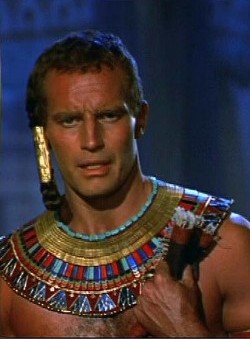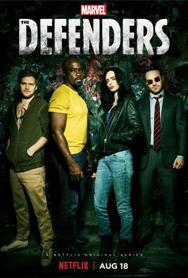 This one is by request.
This one is by request.
Now Charlton Heston is not your typical actor. It isn’t that he is bad, but rather that he is limited, and works best where a very stylized performance is called for. If you are running a tent revival meeting, he is your man. Sometimes, an actor needs to speak to the heavens and announce how the universe is rather than have a nice chat. This works beautifully in The Ten Commandments, whereas in The Agony and the Ecstasy, I would have preferred a human performance. Not that Heston was incapable of playing real emotion—just watch some of the quieter moments from Soylent Green—but larger than life was his norm. So he could come off as either bold and powerful, or silly, depending on the film and direction. His Andrew Jackson (he played him twice, which is fitting…sadly) in The Buccaneer is an excellent case of the latter. I tend to snicker while watching. And the less said about The Savage the better. Most of his attempts at westerns or war films fail because he plays it too broadly.
So, he’s best when his big personality fits (and the film isn’t too condescending), which means fantasy epics are his thing. He’s a natural for Shakespeare, except his Shakespeare films just weren’t very good (Hamlet is decent, but I’ll leave that as an honorable mention for his cameo).
As for some of his better known films that aren’t on my list, I have a whole piece written up on why Touch of Evil is, and should be, missing, and I’ll just say that the third act of Ben-Hur knocks it out and leave it at that. Then there’s the Academy Award-winning The Greatest Show On Earth, which is on every list of the most unworthy Oscar-winners. The Greatest Story Ever Told is a snooze, but it isn’t his fault. He’s fine in The Three/Four Musketeers, but those are middle-tier swashbucklers. And since I’m not stooping to Airport 1975 or Earthquake, for Heston, I’m dropping my top 8 to a top 6:
6 – In the Mouth of Madness (1994) – A nicely constructed bit of faux-Lovecraft from John Carpenter. Heston has little to do with the quality of the film one way or the other. Sam Neill, on the other hand, is excellent.
5 – The Omega Man (1971) – It’s a film of its time, and something of an attempt by establishment Hollywood to understand those hippy kids and their new ways. Yeah, its condescending, but way less than the hippies-in-space episode of Star Trek. It’s amazing how well a story about vampires works when you remove the vampires. The cult scenes have particular power, and even more so in the 1970s.
4 – The Ten Commandments (1956) – And now we’re in the big leagues. The most Heston of Heston roles, he is loud, inhuman, and pretty much perfect. The film has no sense of subtlety and is all the better for it. You want religion and fantasy crashing down around you? Here it is. [Also on both the Vincent Price List and the Edward G. Robinson list]
3 – True Lies (1994) – Again, Heston is more of an after thought. This is James Cameron’s show, wielding another blunt instrument, Arnold Schwarzenegger, with about as much skill as can be done. And Jamie Lee Curtis managed just fine. This is great action/adventure. Not too smart, but not too dumb. Funny and exciting.
2 – Planet of the Apes (1968) – Few films have so entered pop culture, and it’s a bit of a shame as people know the ending (that marvelous ending that screamed out for an actor like Heston), but forget the rest of the film. It’s really a great work. Heston makes Taylor an ass, but one that we can sympathize with, which totally fits with the times. He’s the last establishment man, so yeah, the metaphors are wonderful.
1 – Soylent Green (1973) – Another film where the ending has eclipsed the rest of the movie, which in this case, is just wrong. There’s so much good in Soylent Green, and so much that is better than the ending. The relationship between Heston’s Thorn and Edward G. Robinson’s Sol is the heart of the film, and gives us both actors’ finest performances. This is one of the great science fiction films that doesn’t get the credit it deserves. [Also on the Edward G. Robinson list]
 Sure, I’m still doing these–and one I was working on required some re-watching, so I went with Hope for today. Bob Hope was such a dominant comedian when I was a kid that is is bizarre to see how he is slipping from public consciousness. He also wan’t a very good comic when I was young, but he had been, years earlier. In the ’40s he was one of the best, producing a string of hysterical films. He’d been a stage and radio comic first, and that background was always with him. His routine was always verbal, and quick. His weak spot was one shared by many of the other comics and teams–he was repetitive. He always played more or less the same guy and did more or less the same jokes. They generally worked, but it makes a Hope marathon a bad idea. But then he had reason to keep doing the same thing–it worked, at least for a time. His better films tended to fall into three groupings: the Road pictures with Bing Crosby and Dorothy Lamour; the “My Favorite” pictures where he was mistaken for a spy or PI and got mixed up in espionage; his period costume comedies, which usually had people again mistaking him for someone important.
Sure, I’m still doing these–and one I was working on required some re-watching, so I went with Hope for today. Bob Hope was such a dominant comedian when I was a kid that is is bizarre to see how he is slipping from public consciousness. He also wan’t a very good comic when I was young, but he had been, years earlier. In the ’40s he was one of the best, producing a string of hysterical films. He’d been a stage and radio comic first, and that background was always with him. His routine was always verbal, and quick. His weak spot was one shared by many of the other comics and teams–he was repetitive. He always played more or less the same guy and did more or less the same jokes. They generally worked, but it makes a Hope marathon a bad idea. But then he had reason to keep doing the same thing–it worked, at least for a time. His better films tended to fall into three groupings: the Road pictures with Bing Crosby and Dorothy Lamour; the “My Favorite” pictures where he was mistaken for a spy or PI and got mixed up in espionage; his period costume comedies, which usually had people again mistaking him for someone important.



 I was asked by a friend (yes, a real one, not just a Facebook one) what the Best ‘50s—early ‘60s science fiction films were. I asked if we were talking “best” or “most important” and he said “Why not both?” As I’ve just finished a panel at Dragon Con on the subject, and making that distinction, it is a pair of easy lists for me.
I was asked by a friend (yes, a real one, not just a Facebook one) what the Best ‘50s—early ‘60s science fiction films were. I asked if we were talking “best” or “most important” and he said “Why not both?” As I’ve just finished a panel at Dragon Con on the subject, and making that distinction, it is a pair of easy lists for me.



